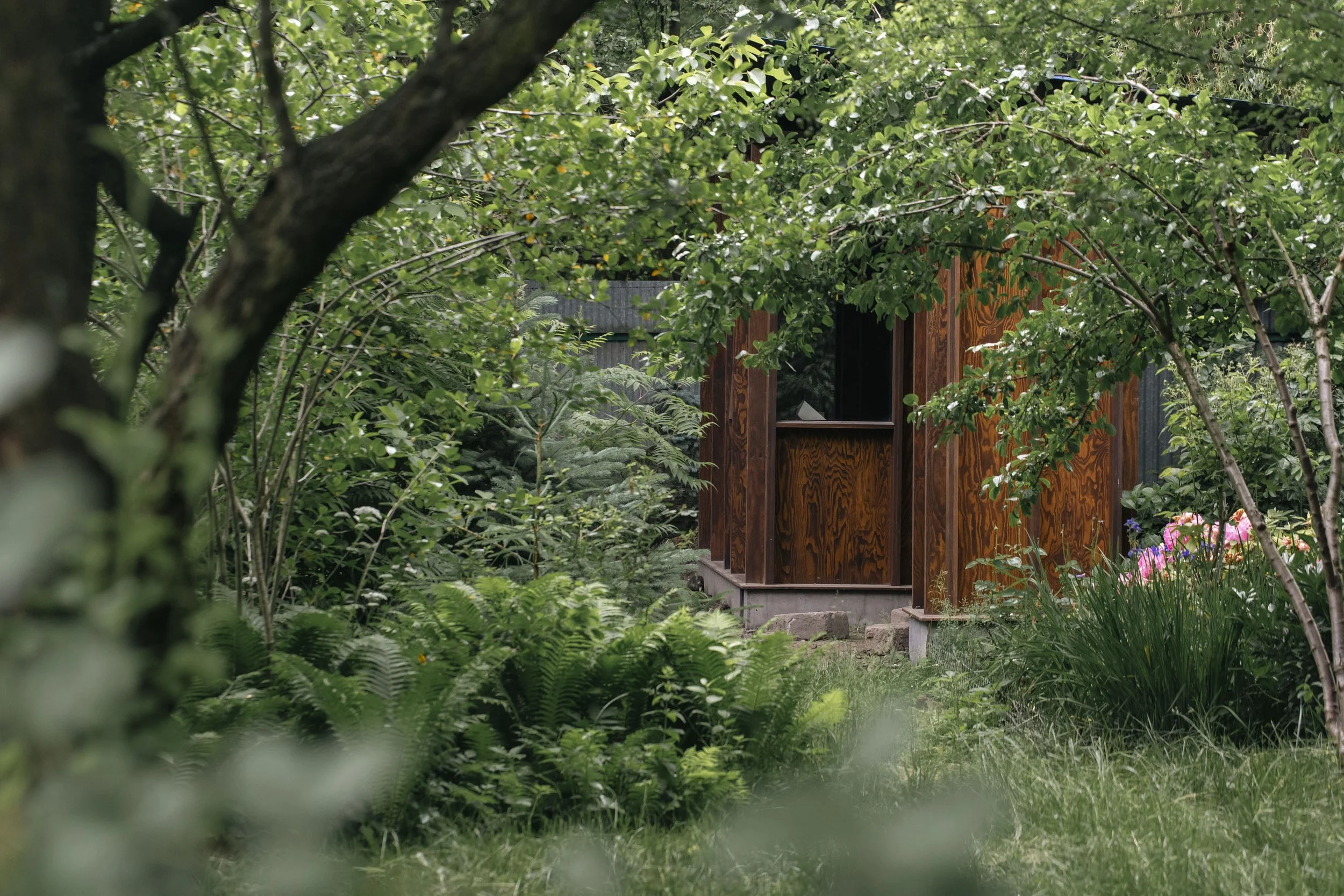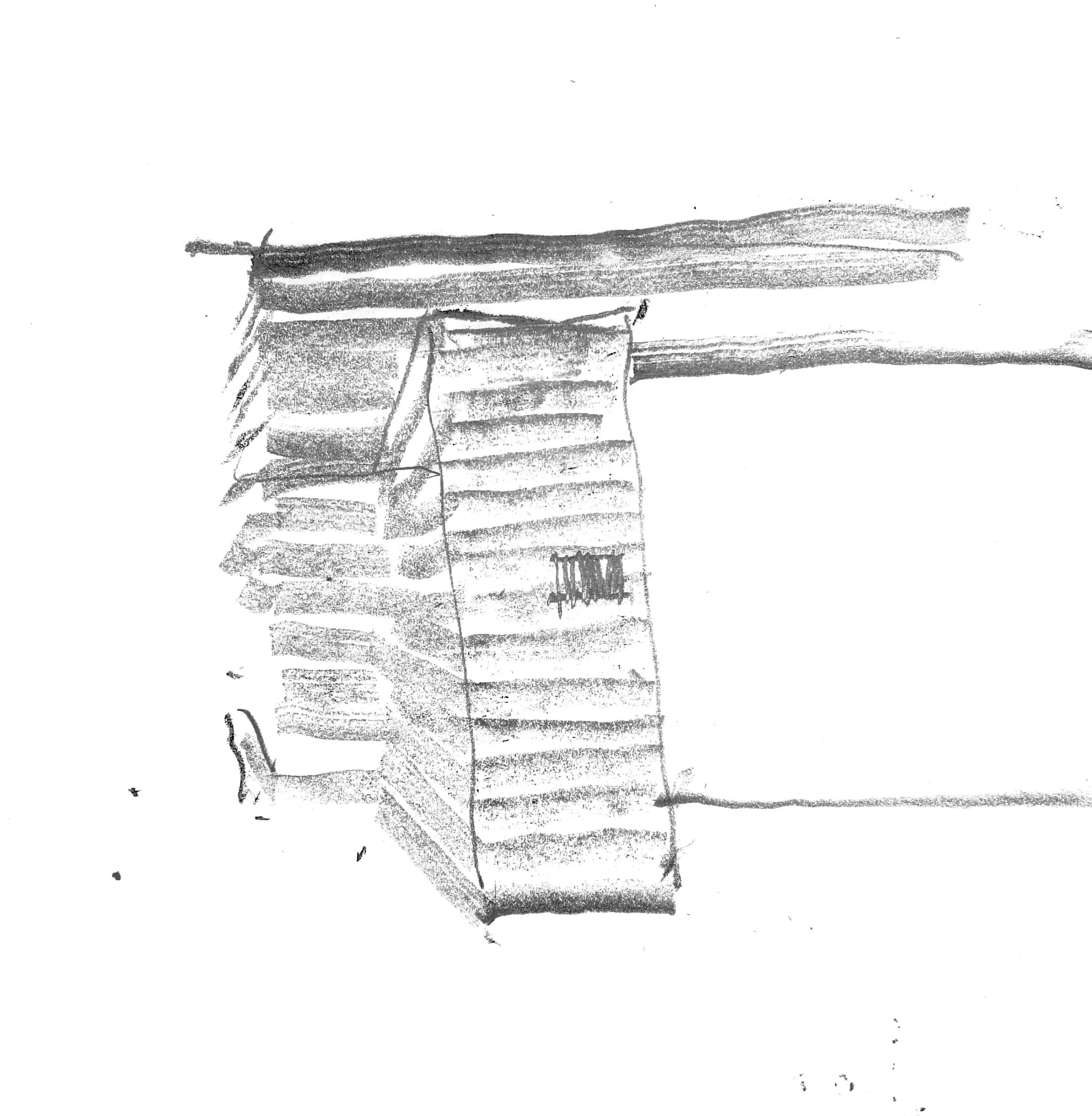Studio Zmir
Studio Zmir, please introduce yourself:
Design duet operating in architecture and crafts led by polish architects Jan Szeliga and Lukasz Palczynski. Our projects focus on the material by integrating design with the manual work, prototyping and execution. We believe that each project is a different story, told by the unique language based on the alphabet of a place. We like to be and then to design around this specific type of being with a place.
Photo © Krzysztof Nowak
#1 Can you tell us what your project “Room for Listening” shown at Zodiak Pavilion in Warsaw was about?
Room for listening was a spatial and sound installation located in Warsaw city center gallery space - Zodiak Warsaw Architecture Pavilion. The project was about the intersection of architecture and music created together with artist Hania Rani and it is a result of a collaboration started in 2020 on the lecture series ‘More than Architecture’ between the three of us. Back then for the first time we tried to create something real and haptic between architecture and music as a comment for the over-stimulated but sensually shallow world we live in. The Room for Listening is a consequence of the project we have done back then and a work of a larger team - together with Krzysztof Janas as a curator, author of all texts in our publication about the Room and Igor Lysiuk as the producer and architect.
#2 How did you come up with the concept? Can you describe the process?
Back in 2020 within the More than Architecture lecture series we came up with the idea of a music box in polish language called ‘pozytywka’ which relates to the latin expression ‘organum positivum’ and german instrument ‘positiv’. We placed three of them in different places in Warsaw to confront the scale of hand crafted, detailed and pleasant objects with the overwhelming background of the anonymous city. Music boxes were designed and made by us out of local sandstone and acacia wood. With those small objects we wanted to ask if there is a place for a sensitivity in the constantly speeding neighborhood dense capital of Poland.
In the meantime we designed and built a small cabin in the garden located in the central district of Warsaw. So again we dealt with this contrast of quietness with different types of greenery, materiality and atmospheres surrounded by a noisy city. We spent that summer on the process of solving this so-called “micro living space” both on the site in Warsaw but also in a tiny old house in the village next to the carpentry where we prototype and produce elements for the projects. Even though the space and atmosphere of this tiny house was just a place to work, we find its atmosphere and history inspirational for the garden cabin but especially for our image of The Room for Listening.
With this image we ended up with a space built out of three different volumes connected by the material and sound with a warm, home-like atmosphere. Place that is very concrete and defined by its haptic qualities but also oniric and welcoming in its atmosphere. Place you want to visit and come back to - maybe not in the way like with the nostalgic feeling of coming back to the house of your grandparents but with a feeling of a summer house of your friends somewhere far from the noisy center of your daily life and you have a spare key to this place so no obligation and no limits - you can just go there in any minute.
Drawings: © Studio Zmir
#3 You build the Pavilion by yourself. What was the building process like?
We changed the exhibition space to a workshop for two weeks. We created space in the space layer by layer, day by day, until the final enclosure that changed the feeling of the pavilion. The smell of undried larch wood fled and came back to us. The material itself suggested the direction the design should take - much more than a detailed drawing. The eye picked up wrong proportions or a too-bright wood grain and the hand sensed uneven edges. The material became a helpful whisperer that suggests which direction the initial thought should follow.
#4 Which role did the music by composer and pianist Hania Rani play in “Room for Listening”?
From the beginning, with Hania, we were a team of co-designers working on the concepts and meanings. All together we were trying to grasp our own way we understand our professions and to find what we have in common. So we did a lot of field recordings together and before that, we talked and wrote about what interested us in our work - What is the basis of our creation?
We still have the feeling that music was first, even if Hania composed it after the space was designed, but this space would not have been created if it were not for the music.
Music played the role of material that enclose undefined space into defined atmosphere.
#5 How did people react? What did you notice?
During discussion between invited musicians and architects on the last day of the Room for Listening we had the opportunity to hear some feedback from the people. It is not a political topic that we are dealing with, nor culture taboo so it is difficult to receive comprehensive and elaborate opinions because simply people are occupied with their comments around hot topics from the ‘front pages’. We are far behind this point of interest but it seems that people miss spaces that open perception by the experience, simple admiration of free and quiet time. How often do you want to suspend yourself in something which is a bit more pleasant than reality? And why do you want to escape from it? Is your home able to help you to create these moments without escaping somewhere else? We found out that there is a need to have a place which is beyond any obligations to culture, religion, time nor personal identification- so then what else is left? We think that a bit of everything at once but nothing really in the essence. If you don’t have anything to look at, finally you start to look at yourself and maybe even your inner self and then we have a problem.
Photo: © Artur Wosz
#6 A moment of unexpected beauty?
Dance and performative tour through the room by choreographers Agnieszka Sikorska and Łukasz Wójcicki and live cello concert by Dobrawa Czocher.
Photo © Studio Zmir
#7 What did it teach you about the relationship between music and architecture?
First of all, how in an incredible and precise way wood in his 22-25% of humidity separated different spaces acoustically. It’s hard to predict acoustics and its factors are based on too many details. In effect the space brings sound closer and the sound itself opens it in the new way.
#8 What came into focus for you now after that experience?
Next life of the Room. We look for new spaces for the installation to be exhibited and we are constantly thinking about it and improving it.
#9 Three things that inspire you at the moment?
Lukasz: Since I remember I was always collecting stuff - I had more stones than toys and am still doing that so this constellation of things is the constant source of inspiration. So a bit more than three.
Jan: The answers of my interlocutors, places and things that I confront with questions.
Photos: Studio Zmir
#10 What do you currently read, watch, listen to?
Jan: I never read one book at a time- I have few of them spread around in different spaces, but definitely the most interesting one at the moment is the ‘Dictionary of the Khazars’ by Milorad Pavić. Recently I watched Abbas Kiarostami - ‘Where Is the Friend’s House?’ As background for my answers I am listening to ‘Antivalse’ by Chapelier Fou.
Lukasz: Sometimes I like to watch some undemanding intellectually series so ‘The Old Man’ is open now between some of more important tabs in my browser then recently I watched again ‘Two Man and a Wardrobe’ by Roman Polanski, short film from 1958, I think one of the first by Polanski - for sure his first collaboration with a great musician Krzysztof Komeda. Then readings: ‘The good Life’ by Inaki Abalos, ‘Eloquent Silences. Writings on Art and Architecture’ by Carlos Marti Aris and I am listening to Yasugi Bushi ‘Bolero’ right now.
Links
Instagram: @studio.zmir
Photo Credits: © Studio Zmir, © Artur Wosz, © Krzysztof Nowak, Interview Caroline Steffen








